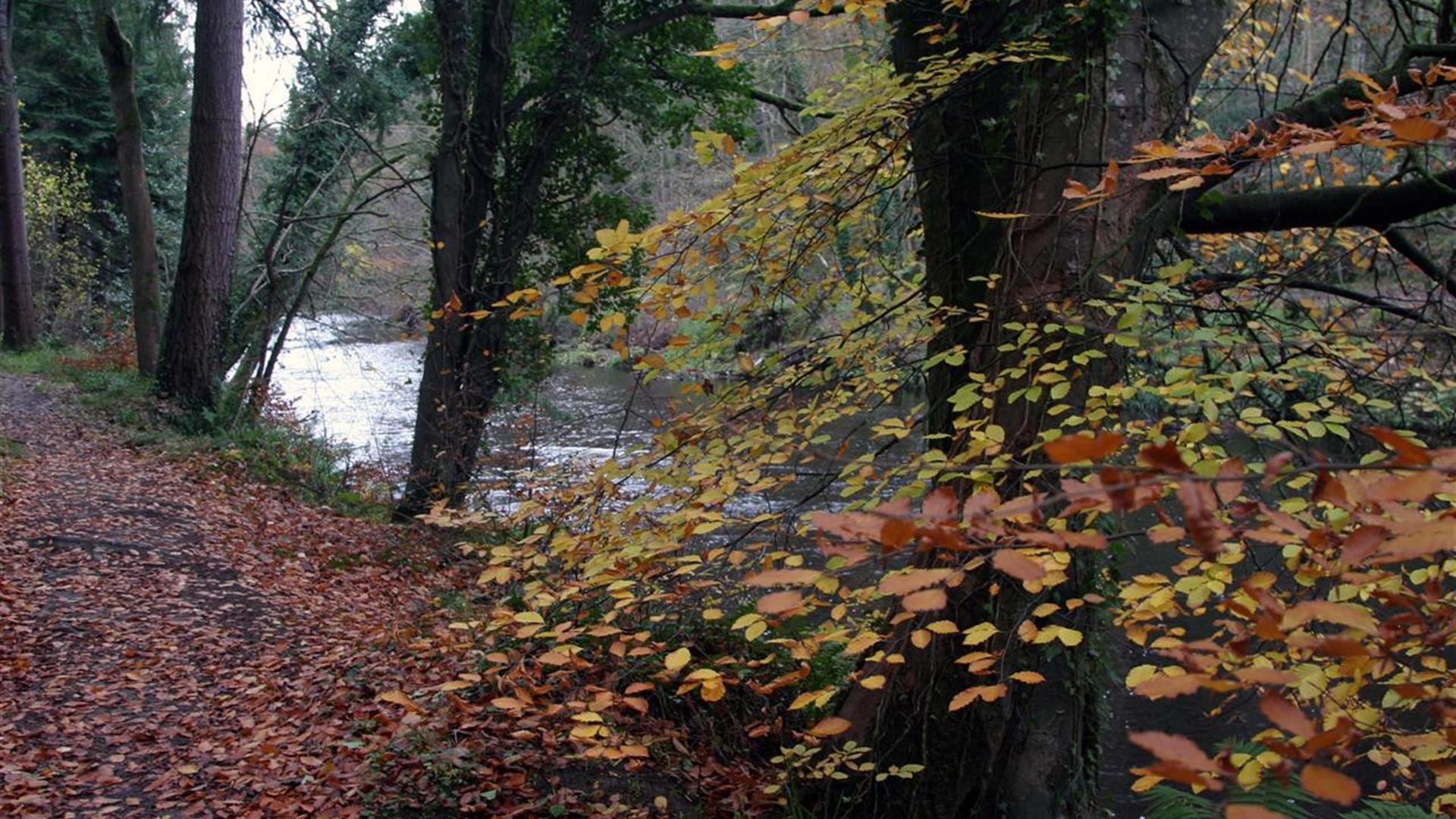In the rural areas of Derry, Northern Ireland, there is a small dolmen grave under a hawthorn tree. It is said to be the grave of the vampire king, Abhartach who is said to still be lusting after blood.
Ireland’s ancient hills and mossy graveyards are no strangers to ghost stories and restless spirits. Yet among these tales of banshees and fairies lies one of the island’s oldest, darkest legends — the story of Abhartach, a tyrant chieftain whose insatiable thirst for blood refused to end, even in death.
Thought by some folklorists to be Ireland’s original vampire myth, Abhartach’s grim story predates Bram Stoker’s Dracula, and may well have been its inspiration.
The Tyrant of Slaghtaverty
According to legend, Abhartach was a cruel and malevolent chieftain who ruled in what is now Slaghtaverty in the parish of Errigal in Derry, Northern Ireland. Although he is remembered as a vampire, the name and description of him is much closer to a dwarf. As the name suggests, he might have been remembered for his height.


He is said to have lived in the 5th or 6th century, at a time when the Glenullin area of Ireland was a patchwork of small kingdoms of tribal warlords were the mysterious druids still lived and practiced their magic and when the catholic saints started settling on the emerald island.
Feared by his own people, he was said to possess dark powers and a fascination with the occult. Through his practice of dark magic, he killed his subjects for fun. His tyrannical ways became so unbearable that local warriors, desperate for relief, conspired to kill him.
In one version of the tale, a neighboring chieftain named Cathán rose up against Abhartach and struck him down, burying him in a standing grave, marked by a solitary stone. Burying in a standing position was a custom at the time for high-ranking chieftains. But peace would not come so easily.
In other versions his first death was through no fault but his own and he died when he was stalking his wife. He was a jealous man and trusted no one. He thought she was having an affair and crept on the ledge outside of the castle to the window outside her bedroom. He slipped and fell to his death and they quickly buried him for the first time. But it would not be his last.
The Undying Menace
The day after his burial, Abhartach returned — clawing his way out of the earth, demanding blood from his terrified subjects to collect in a bowl for him to consume. In some versions of the legend, his subjects were so afraid of him and submitted to him, making blood sacrifices to him, waiting for someone to save them.
Again, Cathán slew him, and again, Abhartach returned. It was then the people sought counsel from a druid or wise elder who revealed the grim truth: Abhartach was no ordinary man, but one of the neamh-mairbh, the undead. In more modern retellings of the story it was a Christian Saint giving the solution to the undead.

To stop his monstrous resurrection, he could not be buried in consecrated ground. Instead, he must be killed with a sword made of yew wood, buried upside down, and his grave encircled with thorns and heavy stones to prevent his escape.
Cathán followed the instructions, and Abhartach was finally trapped — but local legend holds that his restless spirit still lingers beneath the earth.
The Cursed Grave of Slaghtaverty
According to a lecturer in Celtic history at the University of UIster, Bob Curran, the real castle he lived in an be found between the towns of Garvagh and Dungiven, where a small hill now stands. He says that it was here that the fortress of a 5th or 6th-century chieftain with magical powers called the Abhartach once resided.


Today, the place believed to be Abhartach’s grave is a modest site known as Slaghtaverty Dolmen or The Giant’s Grave. Nestled in a field near the village of Slaughtaverty in Londonderry in Northern Ireland, it’s marked by an ancient stone surrounded by a ring of Hawthorn trees and undergrowth. It used to be more stones as remnants of an old monument, but these have been removed over time by local farmers for building purposes.
Locals claim the spot is cursed; farmers avoid working the land around it, and strange misfortunes are said to befall those who disturb the grave. Some say on misty nights, you can hear faint whispers, or catch the flicker of a shadow moving between the trees — as though Abhartach himself still walks, searching for blood.
In 1997, attempts were made to clear the land, but, if local tradition is to be believed, workmen who tried to fell the tree found that their brand-new chainsaw stopped for no reason on three occasions. When attempting to lift the great stone, a steel chain suddenly snapped, cutting the hand of one of the labourers and, significantly, allowing blood to soak into the ground.
The Dracula Connection
We first have the legend written down in Patrick Weston Joyce’s The Origin and History of Irish Names and Places from 1870. In modern versions of the lore, the story is said to be solved by an earlier Christian, and not a druid.
Intriguingly, scholars have speculated that Abhartach’s legend may have inspired Bram Stoker’s Dracula. Stoker, an Irishman born in Dublin, would have likely been familiar with the story of the blood-drinking undead chieftain. While Dracula is commonly associated with Vlad the Impaler and Eastern European folklore, it’s possible that the sinister figure of Abhartach left its own mark on Gothic horror’s most famous vampire.
Newest Posts
-

The Legend of Ireland’s Vampire King Abhartach and the Haunted Giant’s Grave
In the rural areas of Derry, Northern Ireland, there is a small dolmen grave under a hawthorn tree. It is said to be the grave of the vampire king, Abhartach who is said to still be lusting after blood.
-

Hell on Earth and the Haunting in Port Arthur, Australia
In one of the biggest penal settlements in the British Empire, many thousand convicts served their time here, and some never made it out. Ever since then, Port Arthur has been one of the most haunted places in Australia.
-

The Mercy Brown Vampire Incident in Rhode Island
When the whole Brown family succumbed to tuberculosis, the townsfolk in New England started to become suspicious. They believed that one of the dead, 19 year old Mercy Brown was behind it all as an undead in the middle of the vampire mass hysteria that seemed to plague the East Coast.
-

Ghosts of the New Moon: The White Death and the Restless Shadows of Basel
Roaming around Basel a ghost called Weisse Tod, or The White Death was said to terrorize the neighborhood around the Baroque Markgräflerhof building. Who was this terrifying ghost peering into people’s windows with its empty and dark eye sockets?
-

Lenzburg Castle: The Haunting Legends of a Swiss Hilltop Fortress
One of the oldest castles in Switzerland is the hilltop fortress Lenzburg Castle. Said to be built on top of an old dragon lair from ancient times, it is also said to be haunting with a bell ringing for no one and the ghost of a maid by the well in the midst of the night.
-

The Headless Heretic of Basel: The Haunting of the Spießhof Building
Persecuted for his beliefs, the ghost of David Joris, the famous heretic is said to haunt his old home Spießhof in Basel. According to mediums, he won’t leave before clearing his name.
-

The Evil Eye of Rebgasse: Curses, Shadows, and an Exorcism in Basel
Kleinbasel neighborhood is perhaps one of the most haunted places in Basel, Switzerland. In an unassuming house at Rebgasse 38, the well known exorcist Johann Jakob von Brunn visited twice to banish the ghosts lingering in it.
-

There is a ghost legend from Roman times in Zurich. The story of the martyrs and saints Felix, Regula and Exuperantis who rose from their deaths and walked with their heads under their arms, is still an important story for the city.
-

The Gray Ghost of Claraplatz: Kleinbasel’s Neighborhood Spirit
Said to haunt several houses around Kleinbasel district in Basel, Switzerland, the terrifying ghost known as The Gray One was roaming the street. Especially in a now demolished house on Claraplatz, two little girls had to endure his persistent haunting.
-

Ghosts of Uetliberg Hill and The Three Beeches by the Manegg Castle Ruins
A woman scorned by the Manesse family from the ruins of the old Manegg Castle on the hills of Uetliberg in Zurich, she is said to haunt the place she was seduced and ended her life, appearing to passersby on stormy nights.
-

The Restless Spirits of Kleines Klingental: Basel’s Haunted Nunnery
A house of God turned into the sinful playground of the rich and powerful nuns, the former Dominican Cloister, Kleines Klingental in Basel is said to be haunted by the ghostly nuns, still to this day praying to be released from their sins.
-

Anchanchu: The Shapeshifting Vampire of Bolivia’s Lonely Roads
In the loneliest corner of the Andean highlands of Bolivia and Peru, an Aymaran legend of the Anchanchu or the Abchanchu is said to lurk. Disguised as an elderly man, weary from his travels, he uses people’s goodness to attack and drink their blood.
References:
The Abhartach / Irish Vampire: Terrifying Tale For 2025
Does Abhartach, the vampiric chieftain, still stalk the Derry hills?
Abhartach the Dwarf King | Emerald Isle Irish and Celtic myths, fairy tales and legends
Abhartach – Ireland’s Vampire King – by Siobhán Rodgers




